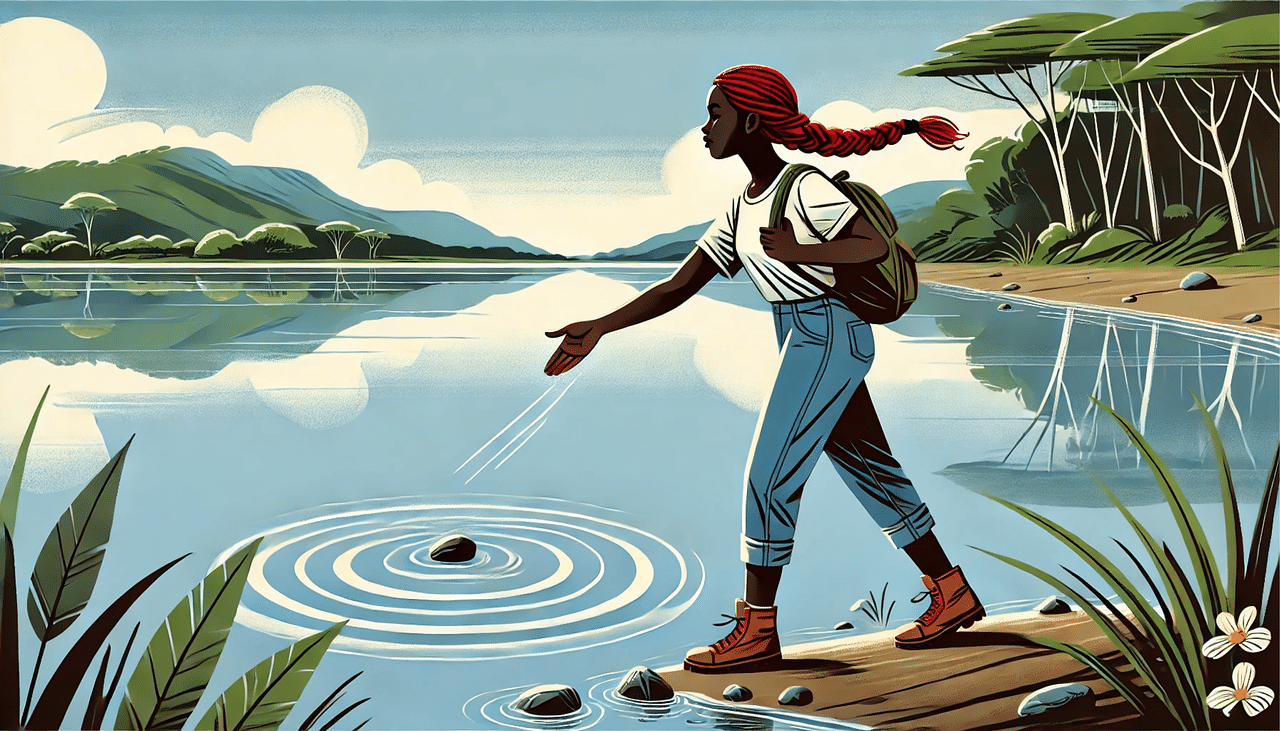Hiking Boots vs. Trail Runners: What You Need for Your Off-Road Adventures
Plus 8 picks to get you trekking.

I have a bucket list Yellowstone trip planned this summer, sans kids. That means I can hike all I want without a chorus of complaints, so my husband and I want to take advantage of this time to journey through the most rugged and challenging miles we can. That means we need the right footwear—which begs the question, which is better, hiking boots vs. trail runners?
Hiking is a great way deepen our relationship, and the last thing I want is foot pain dragging me down. But when do you choose one over the other? This has been the recent focus (um, obsession) of my trip preparation so we’re asking the pros.
I chatted with knowledgeable foot experts for advice on choosing the right footwear for your hike. Plus we’ve got a lineup of options that will inspire you to get trekking.
Hiking boots vs. trail runners: picking the right shoe for your hike
Whether you’re gearing up for hot girl hikes or hiking the U.S., you need proper shoes. And when it comes to the hiking boots vs. trail runners debate, one thing is certain: Try before you buy.
“In the day of online shopping, many people buy without trying—but everyone’s foot type is different,” says Chirag Patel, DPM, a podiatrist at New Horizons Foot and Ankle Associates. “Biomechanics play a huge role. Trails have dynamic terrains and depending on your foot type, you may need more support in one area than the other.”
Here’s how to get it right fit: “When selecting hiking shoes, ensure there’s a thumb’s width of space in front of the big toe to the shoe’s front to prevent toe bumping on downhill sections. The heel should fit snugly without slipping,” suggests Dr. Patel.
Besides securing well-fitted shoes or boots, Patel explains that you can further improve the footwear experience with the right socks. “Wearing hiking-specific socks that wick moisture away and provide additional cushioning is beneficial.”
Maybe you already have an adorable pair of fashion boots, but it’s better to leave them in the closet.
“First, fashion boots usually aren’t as breathable or waterproof as their activewear counterparts, which means your feet will get damp and stay damp,” says Nate Helming, head of content and engagement at Fleet Feet and an experienced running coach. “Plus, with challenging terrain, you want an upper with a supreme locked-down fit and the right foot shape and support so your foot is not sliding around and getting blisters an hour or two into your hike.”
Finally, fashion boots can be heavy. The last thing you want while hiking is a heavy boot, that doesn’t breathe at all, has mediocre grip which can lead to slipping and falling, and little ability to customize the fit to your foot.
Do a trial run
No matter what footwear you go for, you’ve got to try them out before your big hike. Don’t swing by the shoe store on your way to the trail.
Ideally, you’d try them on to decide the right shoe, but that isn’t always possible. Helming provides a timeline for online ordering: “If you know the size and model that’s worked well for you in the past, you could buy online two to three weeks prior to your trip.”
Looking to try a new brand or style? “You’ll want to buy six to eight weeks before your trip to allow yourself time to try a different model or size,” says Helming.
Rina Harris, functional podiatrist at Vivobarefoot, says that most trail shoes (especially minimalist ones) these days don’t require much of a break-in period because they are designed to be foot-shaped, flexible, and support your natural foot and ankle function.
“However, I’d still recommend wearing them on a few short walks or hikes to make sure they fit well and avoid any potential discomfort during a long hike,” she says.
Hiking boots, however—especially ones with leather—tend to have a longer break-in period, so keep that in mind when purchasing.
Hiking boots
Part of me is hoping that hiking boots are the answer to my footwear needs because they are so stinking cute. But what purpose do they serve…besides fashion?
“Hiking boots offer a stiffer sole for stability on uneven surfaces, deep lugs on the outsole for traction, and some degree of waterproofing to handle wet conditions,” explains Dr. Patel. “Additionally, ankle support is crucial to prevent sprains.”
What type of hiking requires boots? If you’re hitting high-elevation trails that aren’t well groomed or you’re blazing your own trails through overgrown areas, boots may be optimal.
Dr. Patel recommends mid to high-cut boots for hilly, mountainous trails. “Rough and uneven terrain requires more protection for the feet and ankles, as well as better grip to prevent slipping.”
When you’re going off trail or into untamed territory, you may need to amp up the support and protection with a robust, high-cut boot. “Hiking off-trail exposes you to potential hazards like sharp rocks, thorns, and snakes. Durable and protective footwear is essential for safety,” says Patel.
Exploring nature by taking the path less traveled can be incredibly grounding. You’ll just need to choose a boot made of durable, waterproof materials and include a good tread grip. Here are some hiking boot options:
Best mixed terrain hiking boot

These lightweight, mid-cut boots are perfect for mountainous and mixed terrains with their stability and grippy soles. The coated leather upper is waterproofed with GORE-TEX technology so your feet will stay nice and dry.
Best rugged terrain hiking boot

Embarking on a backcountry hike? You’ll be protected from the elements in these high-cut boots made with waterproof leather. Plus, they’re lightweight, so you can go the distance with comfort and agility.
Best boot that feels like a runner

Looking for something protective, yet reminiscent of your running shoes? “Orthofeet Dakotas are very nice—they have the orthopedic shoe benefits but also are a mix between the boot/trail runner,” says Dr. Patel.
Best minimalist hiking boot

Committed to minimalist running shoes? Get the barefoot feel with all the protection with these water- and puncture-resistant Vivobarefoot Tracker Forest ESC boots. “These boots are ideal for hikers who prefer foot-shaped natural footwear,” Harris says. This has also become the go-to all-weather boot for our in-house tester, who calls them “the most comfortable boot I’ve owned” and reports that they’re durable and worth the cost.
Trail runners
Hiking boots protect your feet and ankles but may be a bit bulky. That’s the appeal of hiking in sneakers.
“More and more hikers and backpackers are finding they get plenty of support and grip they need from a trail shoe without the heaviness of hiking boots,” says Helming.
Trail runners differ a bit from your road running shoes. “Trail running shoes have more rugged soles for better grip and traction on uneven and slippery surfaces,” says Harris. “They offer better foot protection than regular running shoes and support natural foot movement over rocks, roots and other obstacles. Their outer-sole can withstand rough conditions and terrains whilst still providing natural sensory feedback.”
That said, trail running shoes are lighter in weight than hiking boots—designed for speed, agility, and foot protection.
As a runner, I can always use an excuse for another pair of running shoes. But will trail runners do the trick for hiking?
They will if you’re planning a hike on a well-groomed trail system—and want to move fast. “These trails are less demanding, so heavy protection and support are less critical. The focus is on comfort and preventing overheating,” says Dr. Patel.
If you’re going to be on rocky, scree-filled terrain and are worried about comfort, look for a shoe with a rock plate (like the Hoka below), which is an extra layer embedded into the shoe to protect the bottom of your feet.
Rounding out some of the top picks:
Best trail runner that feels like a boot

This shoe was so good, it was voted a favorite by two of our experts. Helming personally hiked the Tour de Mont Blanc (110 miles, 30k feet of vert) in a pair of Altra Lone Peaks. “I like Altras because they fit my wider, higher volume feet and the neutral profile fits my arch,” he said. Popular among many hikers, Dr. Patel says, “these are a strong mix between the trail runners and boots.”
Best trail runner for speed

Whether you’re racing to the finish line (or back to camp), speed may be your priority. These trail shoes are super responsive and lightweight for added quickness and agility. Besides being speedy, they’re engineered to provide stability on uneven terrain and protection from pebbles.
Best trail runner for comfort

When you’re planning to be on your feet for hours, comfort is king. I’ve been running in Cliftons for over a decade and they’ve never done me wrong, so the Skyline Floats are definitely on my radar. These shoes combine responsive cushioning and a sturdy, lighweight rock plate and outsole for performance on rugged terrain.
Best minimalist trail runner

If you’ve adapted to barefoot footwear, Harris recommends this trail runner. Water-resistant and made with recycled, vegan materials, the Primus Trail III is built for those hiking in all types of climates. These are for people who want to feel the trail under their feet.
What's Your Reaction?










![Are In-Stream Video Ads Worth the Investment? [Benefits & Best Practices for Marketers]](https://www.hubspot.com/hubfs/in-stream-video-ads-1-20250314-6407067.webp)































.png)









































